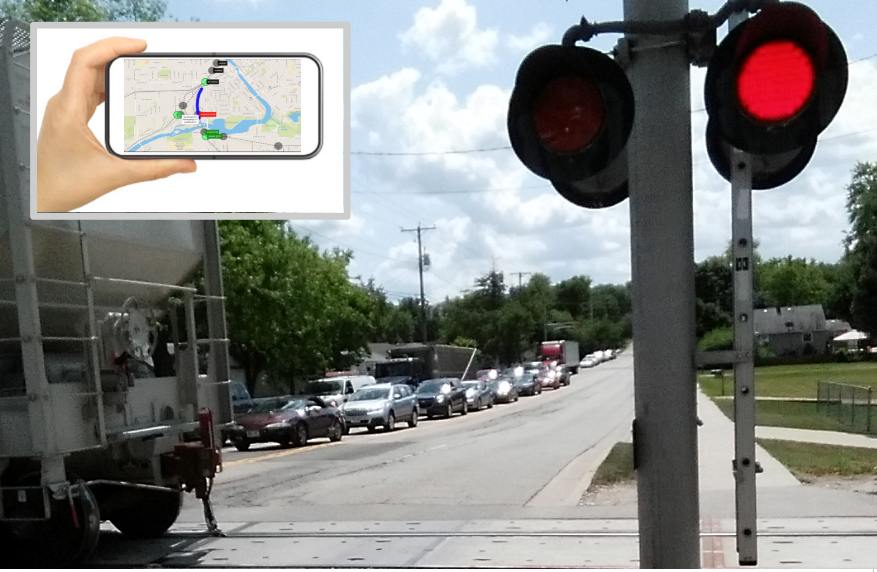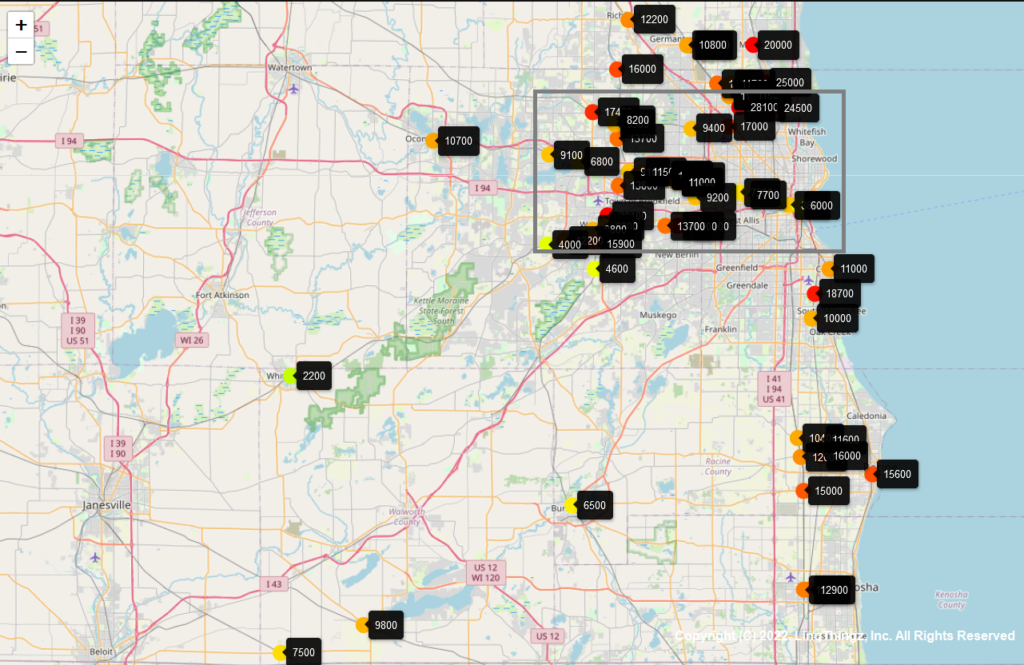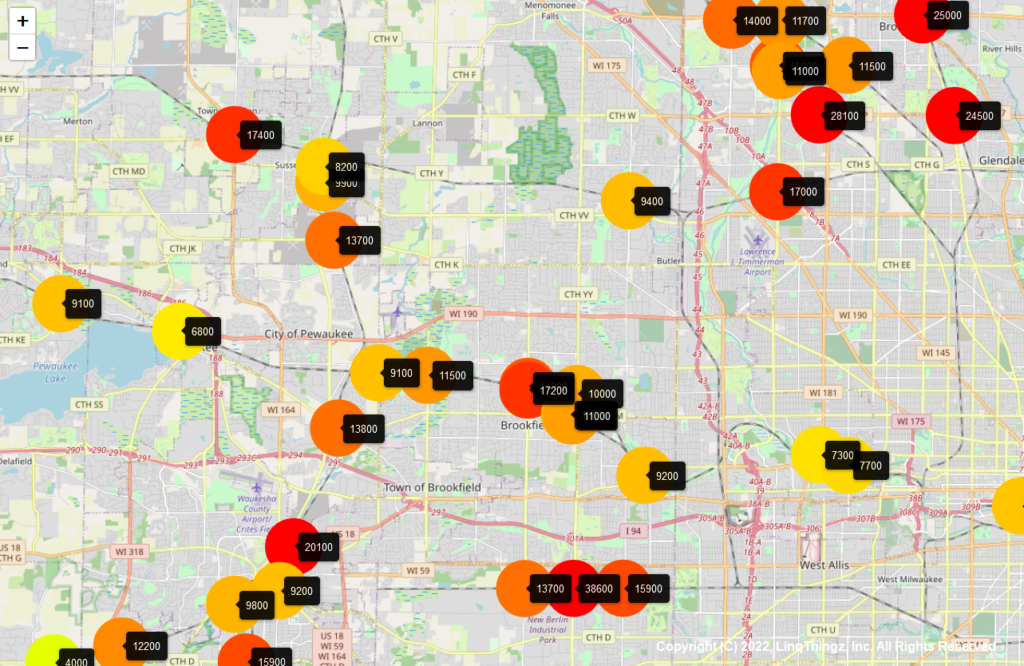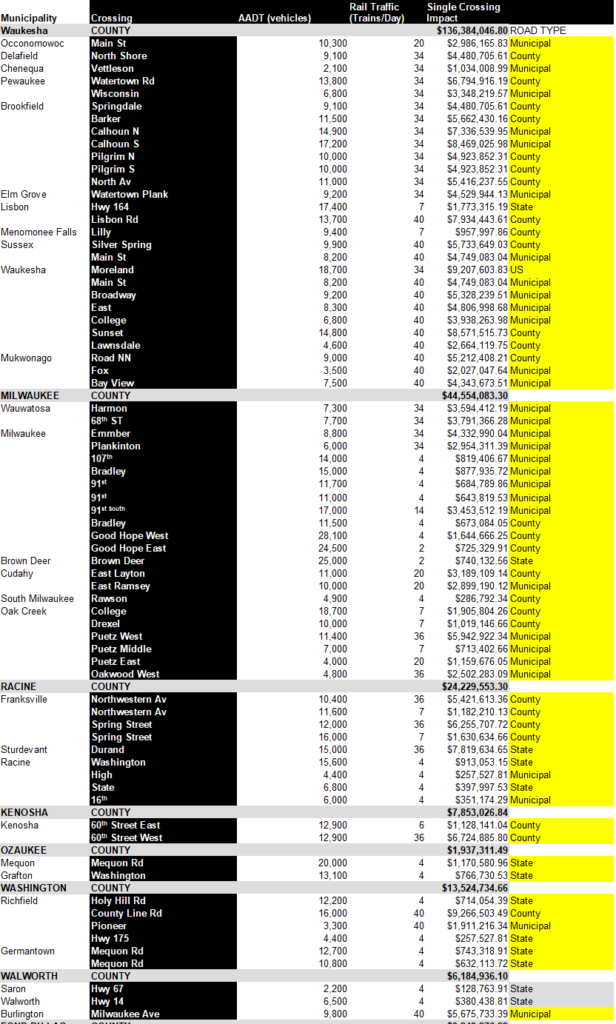Predictive Mobility: Wisconsin Rail Congestion and Safety Improvement
See our one-minute overview video (here).
Rail Safety Statistics
- Every year there are about 2000 collisions between road and rail vehicles.
- Every year there are about 250 deaths from collisions between road and rail vehicles.
- Highway/Rail accidents are 40 times more deadly than Highway/Highway accidents.
- Rail accidents involving toxic chemicals can affect communities > 20 mile away.
Collisions between trains and motor carriers can be particularly catastrophic (see video) .
Rail Crossing Congestion Statistics ($275B Problem in US)
- 1.3 Billion vehicles cross rail tracks each day.
- 41 Million Tons of Carbon are added waiting at crossings.
- $19 Billion is spent on excess fuel waiting at crossings.
- $2 Billion is spent on excess emergency response expenses.
- $92 Billion is lost on community productivity waiting at crossings.
- $162 Billion is lost on logistics productivity waiting at crossings.
Shortcomings of Current Grade Crossing Solutions
- 70% of grade crossing accidents occur because drivers simply go through the crossing, ignoring all current safety measures.
- Cross bucks, invented in 1867, when roads where dirt and traffic was horses, don’t work in today’s fast moving world of electric cars, connected vehicles and mobile phones.
- Current solutions don’t take into account the changes in human behavior and the use of navigation and mobile technologies.
- Current solutions do not take into consideration a 2050 road map of traffic that includes electric and autonomous vehicles.
Project At-a-Glance
Rail remains the most effective means to carry large amounts of freight, but increasing rail and highway traffic pose enormous congestion and safety issues at grade crossings. This PILOT Study aims at building a pathway to modern connected vehicle infrastructure and mobile communication infrastructure while also deploying variable messaging signage and transit integration in order to have a positive impact on: Public Safety, Commerce, the Environment and People. The system will be paid for with commercial and Federal grant funds with no expected direct costs from local municipalities.

Project Plan
We Propose to implement a partial Predictive Mobility solution in the Southeast Wisconsin Counties of Waukesha, Milwaukee, Washington, Ozaukee, Walworth, Racine and Kenosha, using products and services from a collection of respected traffic solution and telecommunication vendors. The PILOT will implement Predictive Mobility at 60 of the highest priority crossings (out of 4000 in the State). These priority crossings have greater than 9000 AADT and have high volume Class I rail activity (CP, CN, UP). The implementation involves placement of sensors at these priority crossings, the addition of these crossings to the LinqThingz Android/Apple mobile applications, Access to LinqThingz API for Computer Aided Dispatch, and Variable Message Signage at the top 5 priority crossings (AADT greater than 15,000). The study will include quarterly reports comparing changes in crossing behavior from a 3rd Party traffic engineering company and academic institutions. Community feedback will by measured through a 3rd Party media company.


Expected Benefits
- Leverages modern behavior where 75% of travelers use mobile/connected vehicle based routing.
- Can be implemented, TODAY, in a mater of months, compared to many years for bridges and tunnels.
- For the price of an electric bus –TrainLinq solution eliminates 46 times the carbon pollution.
- For the price of a typical bridge at one crossing – TrainLinq solution re-directs traffic at 5000 rail crossings.
- Replaces or enhances 100-year old technology that is shown not to be effective.
- Positive environmental impact.
- Solutions serve all communities.
- Aligns with 2050 road maps where 75% of road vehicles are autonomous.
Cross bucks were patented in 1867 when roads were dirt and traffic was horses. This project strives to bring together Government, Railroad, Telecommunication, and Commercial organizations to provide a rapid, low-cost and sustainable solution to a significant transportation problem. We expect a maximum ROI to the Southeast Wisconsin community of $250M+ per year, after a complete roll out, in reduced carbon emissions, fuel usage, people and commercial productivity, improved emergency response and fewer accidents and deaths at rail crossings. Initial projections show that the top 20% of the crossings represent more than 50% of the problem, meaning we expect significant results and ROI on this three year PILOT.


Predictive Mobility
Predictive Mobility solves the problem of highway traffic congestion and blocked emergency vehicles at grade level rail crossings by providing advanced warning and the ability to avoid blocked crossings altogether.
About the Calculations
Rail congestion is a growing problem across the US. In this study, we specifically looked at the problem in Waukesha County. We performed the analysis following the Department of Transportation studies at the federal and state level, summarized on our site here.
A Report to Congress
Rail congestion is a growing problem across the US. A study in Decatur, Illinois demonstrates that 97% of its people are chronically plagued with train-related delays. In 2017, the Chicago Metropolitan Agency for Planning found that motorists were delayed over 7,500 hours every weekday, costing residents $58 million annually in lost productivity. A study in San Antonio, Texas demonstrated that this is a $1.5B problem, and the traditional bridge-or-tunnel solution would cost an astounding $2.5B. Congestion and emergency response delays at rail crossings have a significant national impact as described in a 2021 Senate report. see https://bit.ly/3InzlY5
